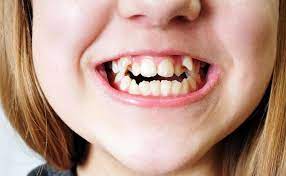Wondering how to fix crowded teeth without braces? You're not alone. Many people prefer to avoid traditional metal braces due to their visibility, discomfort, or lifestyle limitations. Thankfully, modern orthodontics has evolved, offering several non-brace options to treat Crowded Teeth Treatment effectively. From subtle aligners to cosmetic fixes, there are ways to straighten your smile without the wires and brackets.
Clear Aligners: The Most Popular Alternative
Clear aligners, such as Invisalign and other similar brands, are among the most popular non-braces treatments for crowded teeth. These custom-made trays gradually shift your teeth into place over time.
Benefits of clear aligners include:
- Virtually invisible appearance
- Removable for eating and brushing
- Minimal discomfort compared to metal braces
- Fewer dental visits needed
Clear aligners are ideal for mild to moderate crowding. You’ll typically need to wear them 20–22 hours a day and switch to a new set every 1–2 weeks. Compliance is key—results depend heavily on consistent use.
Veneers and Dental Bonding: Cosmetic Fixes
If your crowding is more cosmetic than functional, dental veneers or bonding can provide a fast and dramatic transformation without moving your teeth physically.
Dental bonding or veneers may be suitable if you have:
- Minor overlapping or twisting of front teeth
- Small gaps or uneven teeth shapes
- No major bite issues
Pros of cosmetic options:
- Instant improvement in appearance
- No orthodontic appliances or trays needed
- Long-lasting results with proper care
These treatments reshape or cover your teeth for a straighter appearance but don't address alignment at the root level. They’re best for those seeking a purely aesthetic improvement.
Palatal Expanders and Space Maintainers:
For children or teens, interceptive orthodontic options like palatal expanders or space maintainers can help fix crowding before it becomes severe—without the need for braces.
Why early treatment helps:
- Makes room for incoming adult teeth
- Guides jaw growth to prevent misalignment
- Often reduces the need for future orthodontic work
Key benefits of these devices:
- Subtle and temporary
- Often used in early orthodontic phases
- Less intrusive than full braces
These methods are particularly effective when dental crowding is detected at an early age, making early evaluation essential for kids around age 7.
Tooth Contouring and Interproximal Reduction:
Tooth contouring (also called enameloplasty) and interproximal reduction (IPR) are minor procedures that remove a small amount of enamel between or around teeth to create more space.
This option is typically used when:
- Teeth are slightly overlapped or crowded
- You want a quick, subtle improvement
- Clear aligners need a bit more space to work
Advantages of contouring and IPR:
- Quick, often painless procedures
- No long-term appliances required
- Can enhance other treatments like aligners
These techniques are generally used in combination with other orthodontic solutions rather than as a standalone fix, but they play an important role in non-braces treatment plans.
Retainers and Ongoing Maintenance:
In some very mild cases, retainers alone may be enough to guide crowded teeth into better positions—especially if you've already had some form of alignment in the past and your teeth have shifted back slightly.
When retainers work best:
- Minor relapse after braces or aligners
- Slight shifting of front teeth
- Preventing further crowding over time
To maintain your results, be sure to:
- Wear retainers consistently as directed
- Maintain excellent oral hygiene
- Avoid habits like nail-biting or pen-chewing that can shift teeth
- Visit your dentist regularly for monitoring
Even after completing treatment, Best Crowded Teeth Treatment can return without proper maintenance. Wearing retainers as instructed can help keep your smile aligned and healthy long-term.





Comments